Intel Hybrid CPU Starts 'End of Life' Process
by Dr. Ian Cutress on July 7, 2021 4:46 AM EST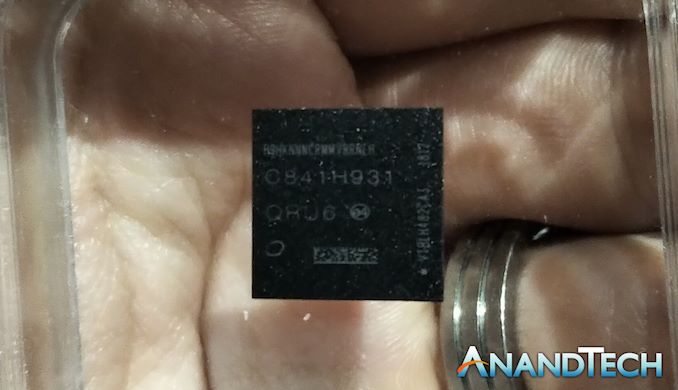
As I opened my inbox this morning, I was surprised. I keep track of when Intel puts products on End of Life (or starts the process through something called Product Discontinuance), and so I usually see a run of 3-5 year old CPUs or storage or servers pass through without much of a worry. When I opened up my daily brief today however, the headline read ‘Core Processor with Hybrid Technology Discontinued’, which immediately struck me as a bit crazy.
Intel announced Lakefield, its only Hybrid CPU on the market, in January 2019. It pairs one of its big cores with four smaller Atom cores in a small 12mm square package. Not only this, Lakefield is one of Intel’s first Foveros packaging processors, with a 10nm compute piece of silicon sitting on top of an IO die, all packaged together with DRAM on top. The goal of the Lakefield design was to produce a processor with a super low idle power, but also have enough performance for hand-held devices. Intel quoted 1.2 mW when in idle, meeting that goal.
Lakefield came to market in June 2020 in two products: the Samsung Galaxy Book S 13.3-inch clamshell laptop, and the Lenovo ThinkPad X1 Fold, a foldable display-based design. Both of these products were premium priced, particularly the Fold with its display, however reported performance was more akin to a quad-core Atom notebook than the $2000 quad-core mobile devices they were aiming for. Battery life sounded good, although we have never tested it at AnandTech due to lack of access to review samples from Samsung, Lenovo, or Intel.
The key thing was the Hybrid CPU design. By pairing one of Intel’s big cores with four of its smaller Tremont Atom cores, the goal was to run the device almost exclusively on the Atom cores for efficiency and then call on the big core when anything latency related was required, such as when the user touches the screen or the keyboard. Within 16 milliseconds (or one frame at 60 Hz), the processor would switch over to the big core for the touch screen interaction, do what it needed to do (often in under 16 ms), and then power back down.
In principle, the concept is sound and makes a lot of sense, especially if the goal is to save battery. As Intel’s first Hybrid CPU design however, there were some initial teething issues as managing threads between the different performance levels required adjustments to Windows’ scheduler. Microsoft already has experience with this when dealing with Windows on Snapdragon devices using the Arm architecture, however it was a first for x86 and the first implementations were reportedly quite rough.
In reality, because of the price of the device, it was compared to hardware that had only big cores. Even if it was compared to Atom based notebooks in the $400 range, because the processor was a low powered device, often lower than the Atom notebooks it was being compared to, it didn’t fall favorably in those benchmarks either. The goal of Lakefield for Intel wasn’t performance, but experience and form factor innovation, which benchmarks never indicate.
The note today from Intel indicates that Lakefield is now on the path to End of Life. This means the following milestones:
- Start of Product Discontinuance: July 6th 2021
- Last Corporate Assurance: October 8th 2021
- Last Product Discontinuance Order: October 22nd 2021
- Orders are Non-Cancellable from October 22nd 2021
- Last Shipment Date: April 29th 2022
The start of the process means announcing that they will stop manufacturing processors (July 6th) and if a company wants to put in an order, they have until October 22nd. However that’s also the date where orders can’t be canceled or returned, and all orders will be shipped by April 29th. That means that products could still come out with Lakefield after April 29th, however the OEM partners will not have any means to secure additional stock.
Intel has set its sights on its future Hybrid CPU designs, with the upcoming Alder Lake platform set to launch end of this year in either desktops or notebooks. There is also talk that Windows 11 is better suited to deal with Intel’s hybrid designs from a scheduler perspective. Overall, to see its only public Hybrid CPU suddenly go on product discontinuance after only a year in the market isn’t a great commitment to the technology from OEM partners. Intel's own Product Change Notification states that 'market demand for the products listed has shifted to other Intel products'.
Related Reading
- The Intel Lakefield Deep Dive: Everything To Know About the First x86 Hybrid CPU
- Intel Discloses Lakefield CPUs Specifications: 64 Execution Units, up to 3.0 GHz, 7 W
- Samsung Unveils Intel-based Galaxy Book S: Intel’s Lakefield Inbound
- Lenovo’s ThinkPad X1 Fold: Combining Foldable Displays, 5G and Lakefield into a… Laptop?
- Intel: Lakefield in 2020, Possible 5G on Foveros
- Intel's new Atom Microarchitecture: The Tremont Core in Lakefield
- Hot Chips 31 Live Blogs: Intel Lakefield and Foveros
- CES 2019 Quick Bytes: Intel’s 10nm Hybrid x86 Foveros Chip is Called Lakefield


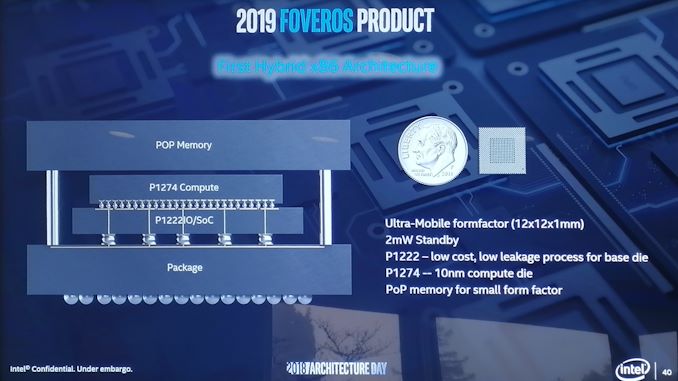
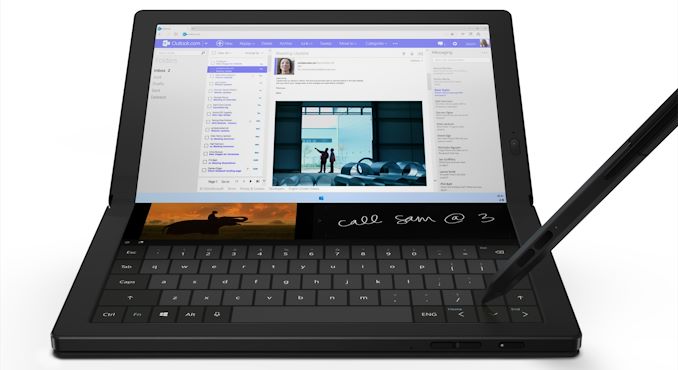
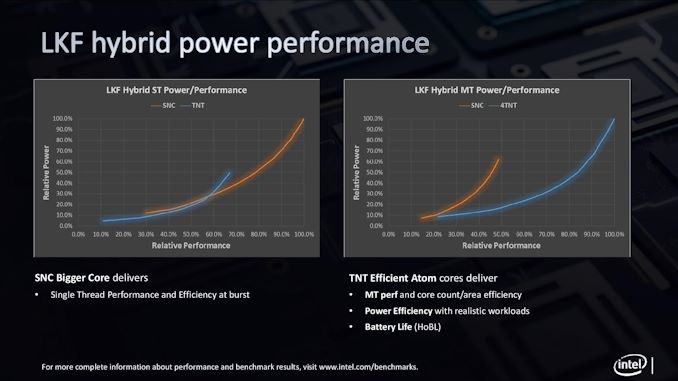
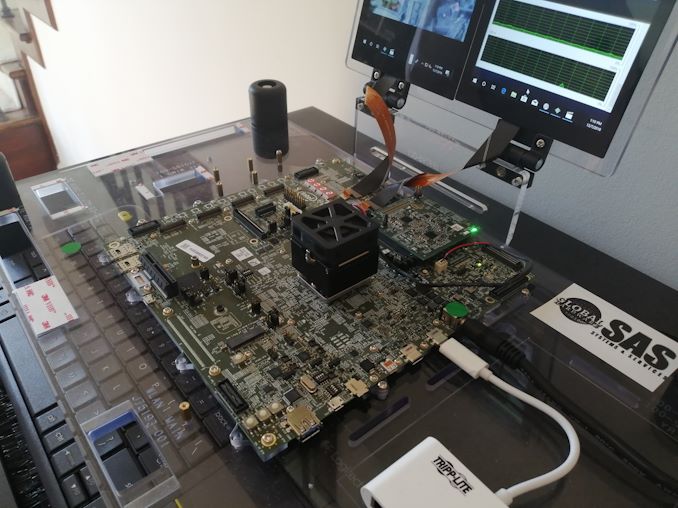


_carousel_thumb.jpg)










58 Comments
View All Comments
IntelUser2000 - Wednesday, July 7, 2021 - link
What made Lakefield suck was it didn't even show a battery life advantage. You could just get a -Y class system and have far better performance, with similar battery life.Samus - Thursday, July 8, 2021 - link
I'd say I agree with that sentiment. This was an ambitious goal that could have been amazing if it offered iPad levels of standby in an x86 device. But it didn't. It didn't even offer standby much better than any other x86 device - mostly because Windows is so good at managing that through processor power management minimum process states.The entire project reminds me of Transmeta Crusoe. Not that it was compiling x86 instructions in a software abstract layer or anything ridiculous, but that it was taking this outside-of-the-box approach to tackling power efficiency with the end result having no benefit.
TheinsanegamerN - Friday, July 9, 2021 - link
It sure doesnt speak well for alder lake, does it?serendip - Friday, July 9, 2021 - link
Probably not. ARM big.LITTLE scheduling is already pretty good on Linux and Windows and Windows 11 on ARM is showing longer battery life and snappier performance. It's hard to compete with that using x86 cores.psychobriggsy - Wednesday, July 7, 2021 - link
Well I guess low uptake killed this one.They've also cancelled ICL-U and CML-U, obviously they have TGL-U now which is far better, but older processors usually live a lot longer. I suspect it's 10nm fab capacity to blame.
FieldLake should have a tiny 10nm die, so capacity should be less of an issue, but with only two, presumably low-selling, products, it's dead. It served as a demonstrator of Foveros mass manufacture, whether the results are good, or not so good requiring fixes.
AC_666__ - Wednesday, July 7, 2021 - link
Given ICL-U and ICL-X are on the same process, I'd imagine they're shifting the wafers over from the laptop chips to the server side as TGL-U is already doing great in mobile and they probably need more of these big die server parts.And yeah, Lakefield was mostly a prototype for Heterogenous cores and Foveros with 55um bumps
stepz - Wednesday, July 7, 2021 - link
Uptake was hampered by Lakefield being such a crappy product.mode_13h - Wednesday, July 7, 2021 - link
Windows is the problem, but not for the reasons stated in the article. My employer issued me a H-series quad-core and a U-series dual-core 14 nm Intel laptop, before the pandemic (I got the U series, since I hated lugging the H back & forth to the office). The only problem is that Windows bogs badly on the H and is borderline unusable on the U, due to all the security software they loaded onto it. I can't imagine running it on one of these little Lakefield chips.I'll bet running Chrome OS on it would be a completely different story, but then you'd probably do better just to get a Snapdragon 8cx machine, for a fraction of the cost.
mode_13h - Wednesday, July 7, 2021 - link
BTW, I have a Skylake i3 laptop, running Linux, that I use for some streaming to my TV and a bit of web browsing. It's completely fine. Battery life is fine, and the fan is nice and quiet, when it runs.The U-series Windows laptop I referenced above is an i5 Kaby Lake. Its fan seems bordeline, because the machine smells like it's overheating, when running under load for a little bit. I even dusted it periodically, too.
at_clucks - Thursday, July 8, 2021 - link
"Windows is the problem [...] due to all the security software they loaded onto it."So is it Windows though?
"I have a Skylake i3 laptop, running Linux, that I use for some streaming to my TV and a bit of web browsing. It's completely fine."
Is it relevant though?
You compare a Windows laptop loaded by the IT team with 3 dozen "security software suites" plus the usual load of domain policies vs. that clean home Linux laptop on which you browse a bit and maybe stream to the TV.
Imagine AT doing this sort of benchmarking. In this corner we have the blue laptop, we ran some streaming to the TV and worked just fine, editor's pick! In the other corner we have the red laptop, we ran 256 parallel instances of H.265 4K encoding on the CPU in HandBrake and the cooling got noisy, junk status.